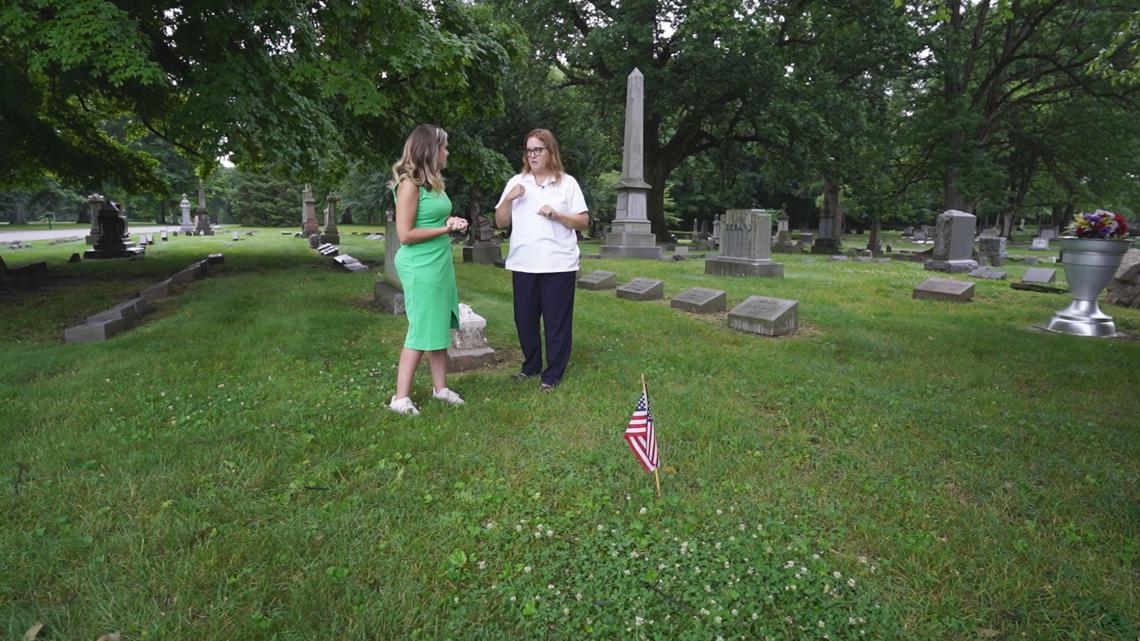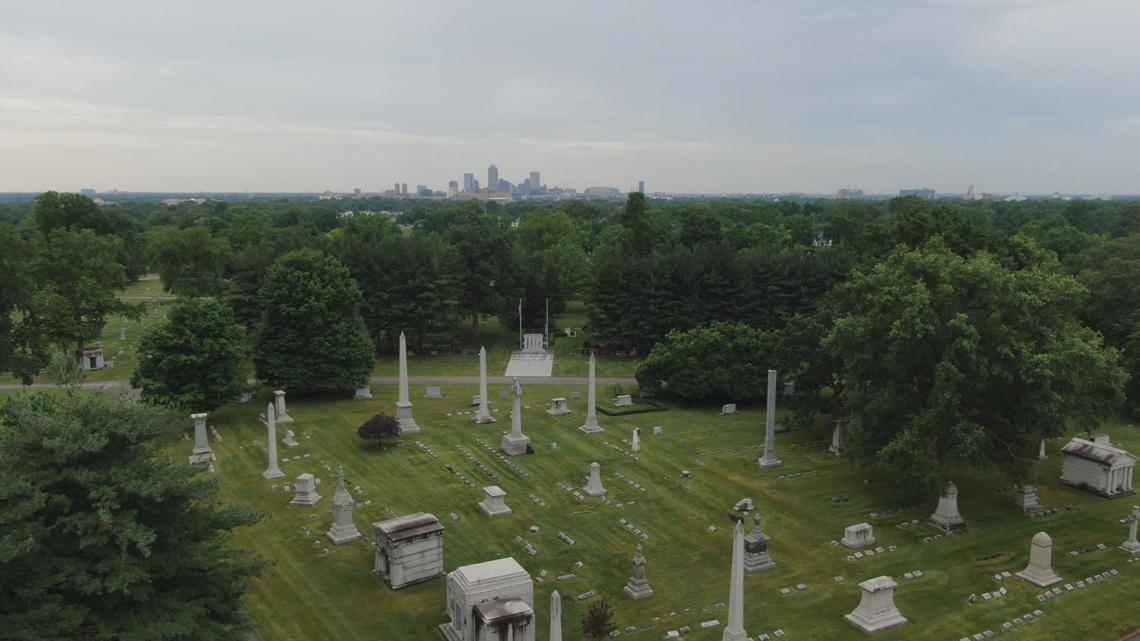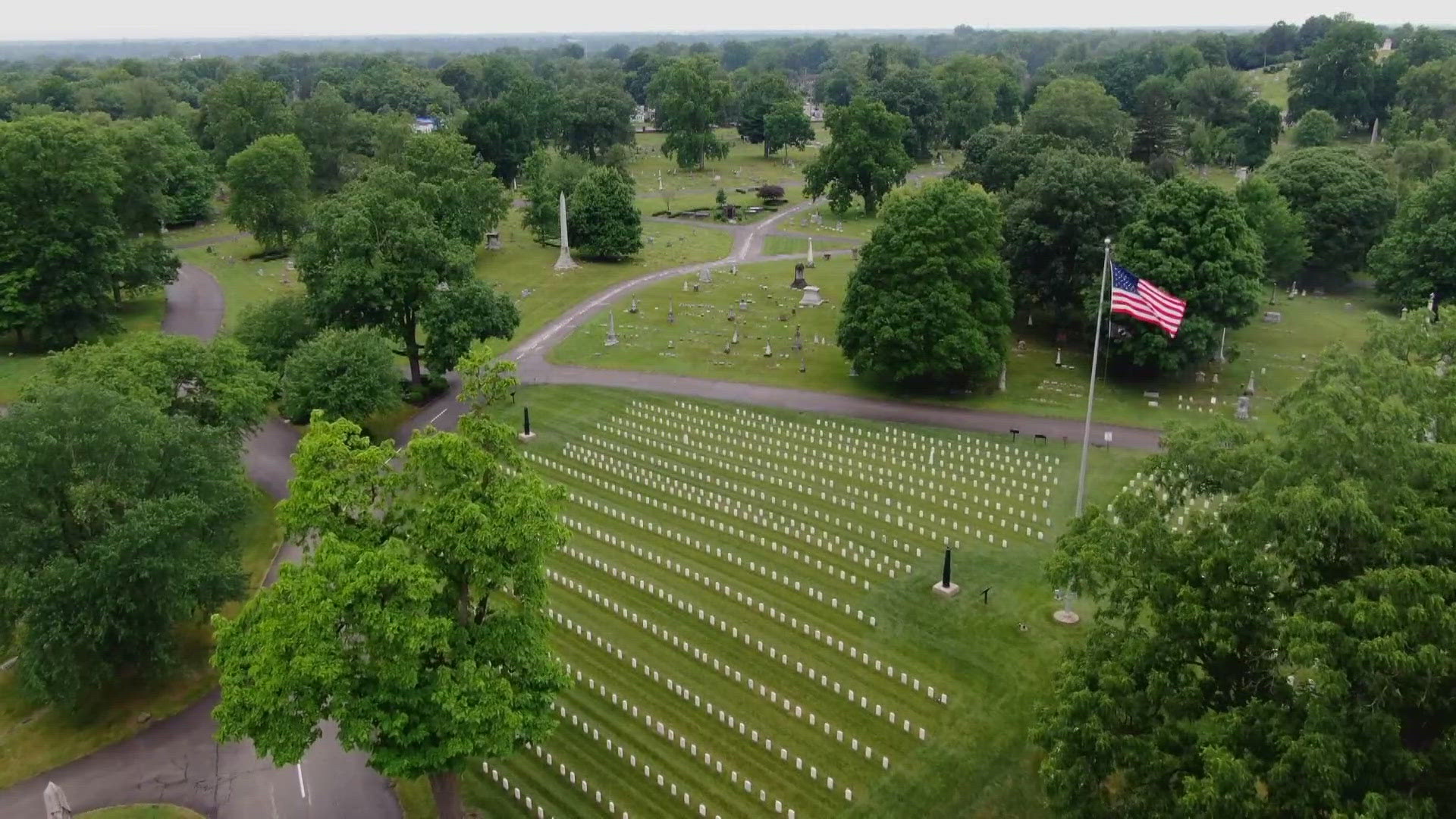INDIANAPOLIS — As we celebrate Juneteenth, we are taking a closer look at several Hoosiers who played a pivotal role in the end of slavery.
13News reporter Lauren Kostiuk went to Crown Hill Cemetery to learn more about the stories and people who helped make Juneteenth possible.
“Juneteenth today is the celebration of freedom — regardless of when someone found freedom because some people found freedom in the 1820s by running away. For other people, it wasn’t until the 13th Amendment was passed,” said Jeannie Regan-Dinius, director of historic preservation with the Crown Hill Foundation.


Robert Bruce Bagby
Robert Bruce Bagby served in the 28th Regiment U.S. Colored Troops, which was the only African American regiment organized in Indiana.
He then went to school and received a Bachelor of Arts before moving to Indianapolis to become principal at Booker T. Washington.
He also became the first Black City-Council member in 1877.
This was a few years after President Abraham Lincoln issued the Emancipation Proclamation and the 13th Amendment was signed.
Bagby is buried at Crown Hill Cemetery, but currently, there is no headstone to mark his grave.
“At the time, he was navigating what all these new things mean. Not only can he vote, he can also become a city-councilor. He can represent his community at the city level,” Regan-Dinius said.
George Washington Julian
George Washington Julian was a political opponent of slavery and was a member of the Free Soil Party, which wanted no slavery in the U.S.
He was also a candidate for vice president in the 1852 election.
“By the time he died, he was somebody who was talking publicly that African Americans were his equal, which was something, at that time period, was unheard of and considered quite radical,” Regan-Dinius said.


Thomas Hendricks
Thomas Hendricks was a state and national political figure as Indiana governor, state representative, U.S. senator and vice president.
He voted against the 13th, 14th and 15th Amendments while in Congress.
“(He was) one of our unfortunate leaders that didn’t see the importance of what those amendments were going to do,” Regan-Dinius said.
U.S. Color Troops
Crown Hill is also home to a national cemetery created by Lincoln during the Civil War in 1866. Many of the men were buried at the former Greenlawn Cemetery downtown and moved.
The cemetery has soldiers from the American Revolution to the Vietnam War.
After the Emancipation Proclamation, the first group to enlist in the Civil War was in Massachusetts. Many Black Hoosiers went down there to enlist, and eventually, Indiana got its own troops in 1863 — the 28th Regiment.
“Unfortunately, a lot of them passed. It was a bloody war. They were put in the line of fire in some pretty serious ways,” Regan-Dinius said.
The 28th Regiment fought in the Battle of Washington that took place in Beaufort County, North Carolina. They also went to Virginia, where they fought in the July Battle of the Crater.
Rev. Willis R. Revels
Rev. Willis R. Revels was a pastor during the Civil War at Bethel African Methodist Episcopal Church, which is the oldest African American church in Indianapolis.
He played an important role in helping free and formerly enslaved people become free. He was also part of the Freedman’s Aid Society.
During the war, Revels served as a recruiting officer for Black soldiers and cared for their families.
James Sidney Hinton
James Sidney Hinton was the first African American legislator to serve in the Indiana General Assembly.
He also assisted with the organization of Indiana’s 28th U.S. Colored Troop in Indianapolis.
There is also a bust of him at the statehouse that was installed in 2014.
You can find more stories and the history of Crown Hill Cemetery here.

